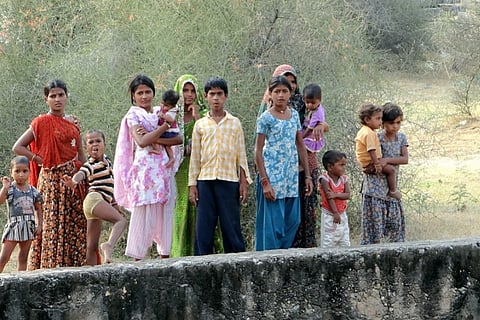

For those of us in India's metropolises, the last decade has been an era of major transformations with the explosive advent of the internet. Book shops closed, retail traders shut down shops, travel agents ran out of business; all thanks to everything being just a click away for customers.
With such radical changes taking place, it came as no surprise that India was expected to overtake the USA and have the second largest internet base in the world by the end of 2015. However, as the ground reality has revealed, it appears that economic status and location both act as significant limiting factors on access to the internet.
Thus, a survey by the Pew Research Centre found that only 22% of the adult population in India has access to the internet, against the global median on 67%, – indicative of the existence of digital inequality in India. The evidence of this inequality is only further buttressed by a recent survey by the National Survey Sample Organization.
According to this latest survey, no more than 161 out of every 1000 households in rural India had access to internet, as against 487 per 1000 households in urban areas.
Further, when economic status is also taken into account, only 49 of every 1000 rural households had access to internet in the first quintile UMPCE (the poorest households), while the same number for the fifth quintile (richest households) was 336. In urban areas, 193 of 1000 households had internet access in the first quintile, while the number for the fifth quintile was 749.
The ratios of households possessing a computer at home was 62 per 1000 households in rural areas, against 292 for every 1000 in urban areas, that is, only 6 per cent of rural and 29 per cent of urban households possessed a computer.
Note: UMPCE = Usual Monthly Per Capita Consumer Expenditure
Already, for most jobs in the organized sector, basic computer skills have become vital and with further penetration of technology into the economy, the necessity for aspiring job seekers to know how to operate a computer will only grow.
However, in rural areas, no more than 183 of every 1000 persons in the age group of 14 to 29 years were able to operate a computer, whereas in urban areas that number increases to 489 for every 1000.The gender divide is also quite evident in regard to computer skills, with only 229 out of every 1000 women knowing how to operate a computer, as against 323 men in every 1000.
When it came to using the internet to find necessary information, the survey found that only 331 persons in every 1000 in urban areas were able to do so, as compared to just 100 in rural areas. The ratios for being able to send emails was even lower.
Evidently, the so-called digital revolution has not thus far been a real revolution. It has just been a privilege obtained by economic empowerment. At a time when an increasing number of public welfare services and programmes are moving online, it is imperative that many more Indians should be able to access the internet and leverage it to improve their lives.
Meanwhile, the National Optical Fibre Network, renamed as the BharatNet project, which plans to connect 2,50,000 Gram Panchayats, has run into hurdles with the state governments as this report by The Indian Express states.
It is yet to be seen whether the centre's Digital India mission and its many associated initiatives to boost internet connectivity in rural areas, can truly deliver tangible benefits to India's rural population and its poor.